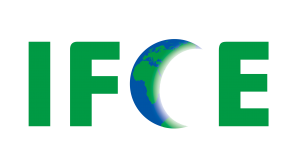2017 Summary of Activities – IFCE pointed out the main cause of heavy smog in China and took leadership in smog control
Release time:2018-03-21
In the beginning of 2017, the President of IFCE Dr. Ping He pointed out that the wet desulfurization is a major cause of haze and pollution in most parts of China, and received widespread attention in the society. Many scholars and researchers have conducted investigations and arguments from different angles and aspects and most agreed with the view of IFCE experts. Zhejiang, Shanghai, Tianjin and other regions issued local environmental regulations to control “colored plume” caused by wet desulfurization .
On 24th September 2017, Science and Management published research from Yong Zhou (Deputy Director of the Institute of Strategic Research at Shandong Academy of Sciences). This study confirms from historical and big data that the main reason for the 2013 smog broken out and PM2.5 outbreak in China was caused by the water vapor from the desulfurization process (low temperature and wet flue gasses). Zhejiang, Shanghai, Tianjin and Handan have issued local environmental regulations to control the “colored flue gas” caused by wet desulphurization. Iron and steel, smelting and other non-electricity industries have also begun to launch the “colored plume” control technology list.
On May 17th, with the support of IFCE, China Biodiversity Protection and Green Development Foundation in Beijing held a symposium on problems and countermeasures of coal fire and flue gas. More than 20 members from the Counselor Office of the State Council, the Ministry of Environmental Protection Environmental Policy Research Center, Fudan University, Shandong University, Environmental Newspaper Office, and experts from environmental technology companies attended the event. Experts pointed out that there are problems in many wet desulphurization technologies through China. It is one of the main reasons for the particulate matter level and haze formation. Experts advised to use dry or semi-dry desulfurization processes to control air pollution and reduce haze.
In June, Dr. Ping He submitted to Chinese People’s Political Consultative Conference with a policy report, in which he suggested to the Chinese government to control wet flue gas caused by wet desulphurization.
On September 6th, the conference of “national coal fired boiler with ultra-low emission and fuel utilization of clean technology” held in Yantai, IFCE helped organize the ultra-low emission technology selection and dialogue session. Also invited were 5 experts to discuss the existence of ultra-low emission flue gas problem, and introduced more mature technologies of dry dehumidification for the market.
On November 16th, IFCE and Zhong Hui Ke Yin assisted the Strategic Research Institute of Shandong Academy of Sciences, held a meeting themed “monitoring method of flue gas pollutants, haze control mechanism and technical path.” Attendees of this meeting were from the Shandong University, Shandong Institute of Meteorology, Jinan Environmental Monitoring Station, Xiamen University, US EPA, Huangtai Power Plant, and some flue gas treatment technology companies. It was believed that there are obvious defects in the monitoring index of smoke pollutants at present. The methods and means of monitoring were backward, and the real emission conditions are not detected. The journalist of Xinhua News reported the forum.
In addition to the public forum, IFCE also worked with the Advisory Office of the State Council, and the Ministry of Science and Technology, to pay serious attention to the negative effects of wet desulfurization. IFCE visited the Advisory Office of the State Council and the Ministry of Science and Technology in November, and received the response from the Ministry of Science and Technology. They will support IFCE for the treatment of wet desulphurization in pilot cities. (Annex 1) Although IFCE has encountered difficulties in this process, the magazine in the State Council still published articles of IFCE experts.
During the process, IFCE gathered an group of top experts in control the humidity of the flue gas and a set of the most advanced tech in flue gas treatment and will send them to pilot cities in 2018.
On May 17th, a symposium on problems and countermeasures of coal burning flue gas was held in Beijing.
The national coal fired boiler with ultra-low emission and fuel utilization of clean technology session in Yantai, Sept. 6
The November 16th “monitoring method of flue gas pollutants, treatment pathway” Forum in Jinan.


